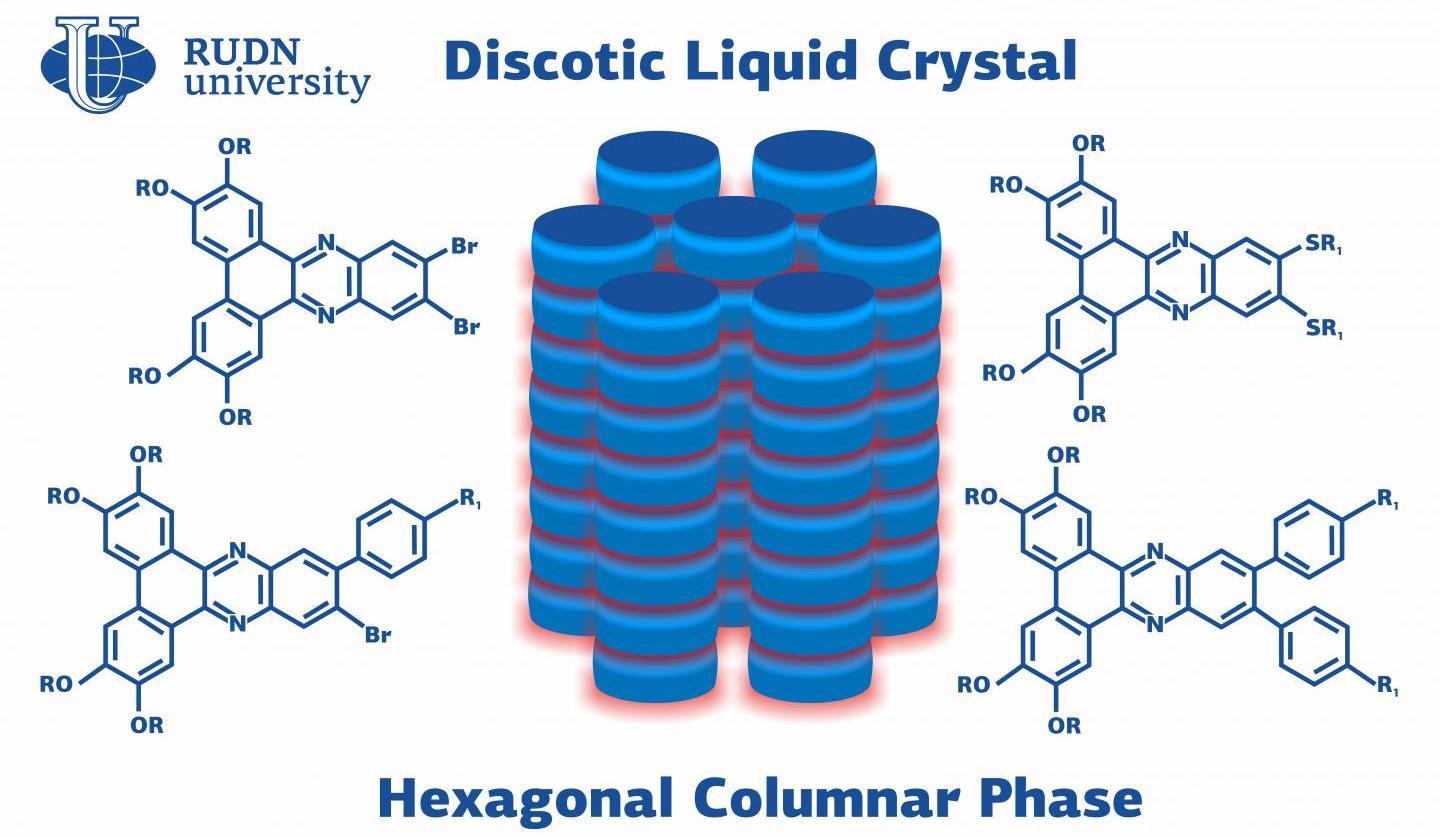Jan 25 2021
New dibenzophenazine-based liquid crystals synthesized and studied by a professor from RUDN University together with his Indian collaborators could be utilized in solar panels and optoelectronics.

Image Credit: RUDN University.
The study findings have been reported in the Journal of Molecular Liquids.
Liquid crystals are considered to be an intermediate phase between a solid body and a liquid. Although they are arranged similar to regular crystals, they flow like liquids at the same time. It is this dual feature that enables them to be utilized in organic LCDs and LEDs.
In contrast to other liquid crystals, discotic ones (DLC) have the ability to get self-assembled into organized structures. Hence, this makes them promising for industrial electronics, specifically for the production of displays.
Discotic liquid crystals are interesting because of their ability to form self-assembled ordered columnar structures. In such structures, an electric charge can move along the column, which makes them useful for optoelectronic devices such as organic LEDs, organic field-effect transistors (OFET), photoelectric solar elements, and sensors.
Viktor Belyaev, Professor and PhD in Technical Sciences, Department of Mechanics and Mechatronics, RUDN University
DLCs are made of disk-shaped molecules that are lined up in columns. An aromatic ring (which is a cyclical organic fragment) encircled by chains of other organic fragments is located at the center of every disk.
The aromatic center enables a DLC to move a charge along the axis of a column. Prof. Belyaev has synthesized discotic liquid crystals with an aromatic compound known as dibenzophenazine at the center.
For the chains that encircled it, the researchers attempted to use three different kinds of fragments. The latest DLCs’ molecular structure was analyzed with the help of spectral, X-ray diffraction, and elementary analyses. Furthermore, the researchers tested the three groups of DLCs in several experiments.
The experiments demonstrated that alkoxy thiol chains elevated the polarity of the molecules in liquid crystals, thereby enhancing the internal structure of the columns and rendering them more uniform. All new DLCs were capable of resisting temperatures of up to 330 °C.
But the crystals that included smaller molecules (the ones with their aromatic center encircled by alkyl thiols) tend to lose their intermediary status and transition from the liquid crystal to the liquid form at lower temperatures (55.1 °C) than the crystals from the other two groups. This is because of the size of the molecules in the columns: the larger they are, the more stable is the liquid crystal state.
The new discotic liquid crystals could play an important role in organic optoelectronic devices and solar panels.
Viktor Belyaev, Professor and PhD in Technical Sciences, Department of Mechanics and Mechatronics, RUDN University
Journal Reference:
Jacob, L., et al. (2020) Synthesis, thermal and photophysical studies of π–extended dibenzophenazine based discotic liquid crystals. Journal of Molecular Liquids. doi.org/10.1016/j.molliq.2020.114419.